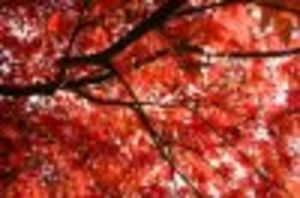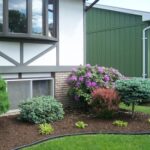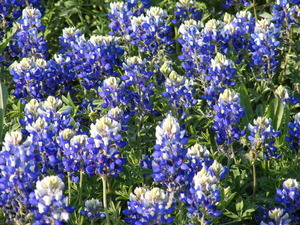When you see the breathtaking fall foliage, it might inspire you to plant your own “rainbow of colors” in your home landscape.
Of course, your planting zone is important. See http://www.fast-growing-trees.com for a map of the U.S., showing zones 3 (far north) to 10 (deep south); you can give your zip code to find out exactly what zone you’re in.
Although your yard may limit some choices that seem too massive or that won’t grow well in your soil conditions, there is certainly a tree suitable for every home and color preference.
Following is a list of 12 trees, ranging in autumn colors from brilliant reds and oranges to bright yellows, blue-greens, copper browns and deep purple. By contrasting your choices with a few complementary evergreens, you can have a fall rainbow in your yard.
Information for each tree will include planting zones, size at maturity, amount of sun needed, soil condition preferences, and drought tolerance. General shapes and notable specifics – like flowers in fall or needs minimal attention or attracts birds – will also be given.
Trees that display red leaf colors in fall include red maple, dogwood, sweet gum, blackgum, white oak, red oak, pin oak, scarlet oak, sourwood, sumac and sassafras. Some varieties of red maple produce particularly-brilliant reds – like “Red Sunset” and “October Glory.” (Color choices by www.baltocfb.sailorsite.net)
Yellow foliage-producing trees include birch, hickory, white ash, aspen, elm, beech, yellow poplar, gingko, honey locust and willow. Sugar maples show orange-yellow colors and bald cypress – a deciduous conifer – displays a spectacular gold.
Red trees:
1. Autumn Blaze maple grows in zones 3-8. Begin with a 3 to 4 foot tree and it will grow 3 feet or more per year. This maple, unlike most, does not drop seed pods!
This is a hybrid of red and silver maples. It creates a minimal mess after leaf-drop.
Mature height = 40 to 50 feet; width = 30 to 40 feet. Sun = full or partial. Good drought tolerance; adaptable to different soil conditions.
The leaves turn into brilliant oranges and scarlet reds in the fall.
This maple matures into a pleasing, symmetrical round or oval shape. It was voted the “urban tree of the year” in 2003 and 2004, but can be a bit hard to find until more people demand it.
2. October Glory maple grows in zones 3-9. This tree produces reds, oranges and yellows in the fall, and its leaves drop later than most other trees.
Mature height = 40-50 feet; width = 25 to 35 feet. Sun = full or partial; adaptable to many soils; drought tolerance is good.
This tree forms a nice oval shape on a tall trunk. In spring, it forms tiny flowers, and birds are attracted to its showy red fruit.
This is a fast-growing tree that needs minimal attention.
3. The American Sweetgum grows in zones 6-8, which includes a large swath through the middle of the country. This tree creates multi-colored leaves of oranges, reds and purples in the fall.
Mature height = 75 feet; width = 40. It prefers full sun; is very adaptable to many soil conditions; and is moderately drought tolerant.
This versatile tree can stand alone as a large shade tree or it can be used as a windbreak or street tree. The leaves grow into 6-inch-wide, 5-point star-shapes. The tree has interesting, deeply-furrowed, brown bark and it forms a cone-shaped crown. It also produces sharp-pointed “gumballs” in the fall, which drop, so it is not suitable for all locations.
Deep purple:
1. The Crimson King maple grows in zones 4-7 and prefers northern areas.
Mature height = 40 to 50 feet; width = 25 to 35 feet. Sun = full or partial; very adaptable to different soil conditions; and it has good drought tolerance.
This is a dense-shade tree with colors (purple or deep maroon) that last from late summer through fall. The tree also produces greenish-yellow flowers in March and April. Its shallow roots can be bothersome to mow over. (porkyfarm.com)
2. The Autumn Purple Ash changes from green to reds, oranges and yellows, turning purple in the fall. It grows in zones 3-9 and keeps its colors longer than most other ornamental trees.
Mature height = 50 to 70 feet; width = 30 to 50 feet. Sun = full or partial; very adaptable to most soils; and it has good drought tolerance.
This deciduous tree grows up to 3 feet per year and forms a pyramidal shape while young, but it matures into an oval-shape. It thrives in moist areas.
Yellows:
1. The Quaking Aspen, named for its heart-shaped leaves, which appear to “quiver” or “quake” in the slightest breeze, grows in zones 2-6.
Mature height = 40 to 50 feet; width = 20 to 25 feet. Sun = full or partial; adaptable to many soils; and it has good drought tolerance.
This tree grows up to 5 feet per year. It forms an oval shape on a long, narrow trunk and offers filtered shade.
2. The Hybrid Poplar grows in zones 3-8, but be sure to select a tree grown for landscaping and not timber use.
Mature height = 40 to 50 feet; width = 30 feet. Sun = full or partial; adaptable to acidic, alkaline or wet soil conditions; and has good drought tolerance. It’s good for hedges, screens or windbreaks.
This tree offers significant shade, is one of the fastest-growing shade trees – up to 6 feet per year – and is extremely easy to grow. It thrives in any growing condition, and can block the house from direct sun to lower AC needs.
In 3 years, the poplar can grow to 20 feet tall and 15 feet wide. It is used to reforest after fires and to reclaim land after strip mining. It is great for fast shade for new homes. (www.naturehills.com)
3. The Tulip Poplar tree grows in zones 4-9.
Mature height = 70 feet; width = 30 to 40 feet. Sun = full or partial; it’s highly adaptable to many soil conditions; and has fair-tolerance for droughts. It is resistant to diseases and insects.
This poplar matures into a majestic cone-shape. In the summertime, the leaves are green when the tree suddenly produces thousands of orange and green tulip-like flowers in a couple days.
This is an attractive tree in all seasons, looking somewhat like a triangular Christmas-tree atop a high base, and it lures birds like the ruby-throated hummingbird.
Copper-brown:
1. The European Beech has earned its place in America as a popular ornamental tree. It grows in zones 4-7.
Mature height = 50 to 60 feet; width = 30 to 40 feet. It prefers sun and a moist-well-drained soil. (Naturehills.com)
This tree forms a dense, upright oval shape and grows more easily than the American poplar.
The leaves are shimmering green, which turn darker during the summer, then turn into a rich, russet brown in the fall.
Greens and blue-greens:
All landscapes should have some evergreen accents for color throughout the winter and to contrast with the rest of the rainbow of fall colors.
1. The blue-green Juniper “Skyrocket” grows in zones 4-9.
Mature height = 15 feet; width = 2 to 3 feet. Sun = prefers full sun to partial shade; adaptable to different soils; and is great for drought-tolerance.
This tree is good for privacy screens or windbreaks; is maintenance-free and pest-free; and it matures in about 15 years.
2. For a year-round, dusty-blue color, the “Wichita blue” Juniper grows in zones 3-9.
Mature height = 10 to 15 feet; width = 4 to 6 feet. Sun = full sun to partial shade; slightly adaptable to different soil conditions; and has good drought tolerance.
This is a large pyramidal tree that makes for an excellent specimen plant; it’s good for windbreaks, screens or privacy hedges.
This tree is fast-growing at 12- to 18-inches per year. It is maintenance-free and can grow to its mature 15 foot-height in 10 years in well-drained soil.
3. The Norway Spruce, the ever-popular, common evergreens grown in zones 2-7.
Mature height = 50 feet; width = 25 feet if standing alone but only 10-15 feet if planted in rows. Sun = full or partial; it’s adaptable to many soil conditions; and has good drought resistance.
Most people recognize this spruce as the commonly-used, traditional Christmas trees in America. This tree has 1″ long, rounded needles, and it produces large pine cones about 4″ to 8″ long. (If needles are flat-sided, it’s a fir tree.) This tree can grow 2 to 3 feet per year.
As a piece of interest, the Norway spruce is often chosen as the Christmas tree for the Rockefeller center in NYC; the one selected in 1948 was a 100-foot tall tree from Connecticut. After Christmas, the trees are cut into lumber to build houses. (www.norwayspruce.com)
This is one of the most disease-resistant spruces, and it grows rapidly to its 50 foot height.
These trees offer wildlife a safe haven.
Trees can last through generations. Some oaks take a lifetime to mature. Once you begin to plant trees successfully, you can become “hooked” on their sturdiness, seasonal changes and natural splendor.
Plan wisely; select a palette of colors for all seasons, and your home will become a place of created beauty that will enchant all onlookers.
Sources:
Http://www.fast-growing-trees.com : Nursery that offers all trees listed, with descriptions, and plant-zone map of U.S.
Http://www.Naturehills.com. Extra info on the “Hybrid Poplar” and the “European Beech.” Retrieved 8-23-09.
Http://www.baltocfb.sailorsite.net : “Planting fall colors.” Specific information on trees’ color choices for reds and yellows. Retrieved 8-23-09.
Http://www.norwayspruce.com. Extensive information on the Norway Spruce. Retrieved 8-23-09.
Http://porkyfarm.com/crimson.asp. Detailed information on the Crimson King maple. Retrieved on 8-23-09.






